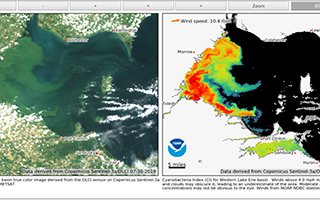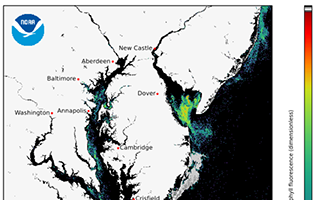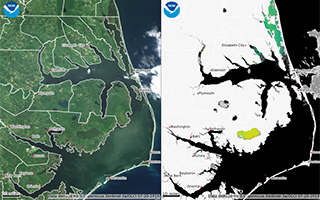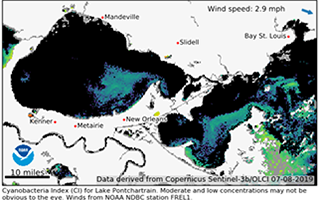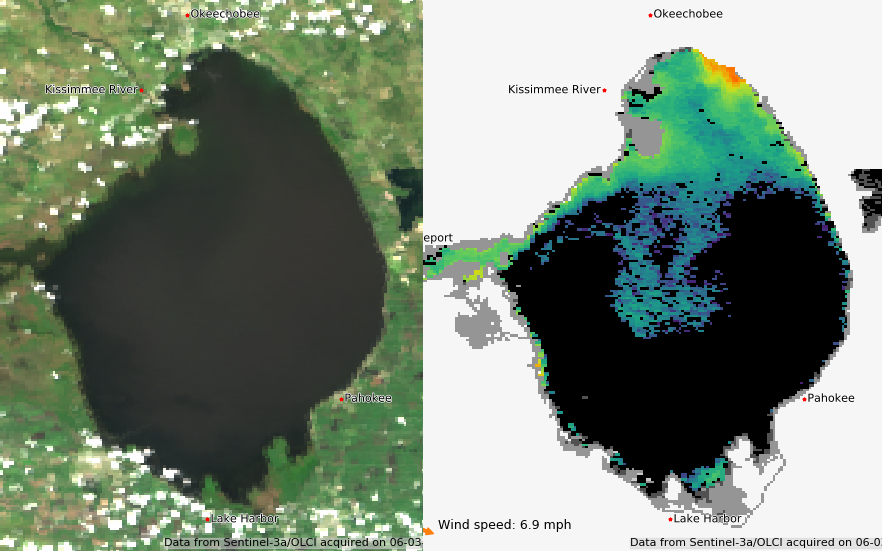Harmful Algal Bloom Monitoring System
Harmful algal blooms (HABs) occur when algae—simple plants that live in the sea and freshwater—grow out of control and sometimes produce toxins harmful to people and animals. Only a small number of species have the capacity to form harmful blooms, but when they do, the effects can be severe for coastal resources, local economies, and public health. HABs occur in every state, and new HABs have emerged in recent years, adding new threats to regions already impacted. NCCOS conducts and funds research that helps communities protect the public and combat blooms in cost-effective ways, and we are breaking new ground in the science of stopping blooms before they occur.
HAB Monitoring Products
NCCOS developed the Algal Bloom Monitoring System to routinely deliver near real-time products for use in locating, monitoring and quantifying algal blooms in coastal and lake regions of the US. This application delivers a suite of bloom detection products in the form of geographic based images. At this time products are available for selected regions. New products are being evaluated, and new regions are being considered; as they are proven useful, they will be made available through this system. See more information about our bloom monitoring imagery.
Harmful Algal Bloom Forecasting
Our HAB forecasts alert coastal managers to blooms before they cause serious damage. Short-term (once or twice weekly) forecasts identify which blooms are potentially harmful, where they are, how big they are, and where they're likely headed. Longer-term, seasonal forecasts predict the severity of HABs for the bloom season in a particular region. Early warning provides health officials, environmental managers and water treatment facility operators information to focus their testing to guide beach and shellfish bed closures or water treatment in a more appropriate timeframe. They also allow the seafood and tourism industries to minimize impacts.
 Official websites use .gov
A .gov website belongs to an official government organization in the United States.
Official websites use .gov
A .gov website belongs to an official government organization in the United States. Secure .gov websites use HTTPS
A lock or https:// means you’ve safely connected to the .gov website. Share sensitive information only on official, secure websites.
Secure .gov websites use HTTPS
A lock or https:// means you’ve safely connected to the .gov website. Share sensitive information only on official, secure websites.

